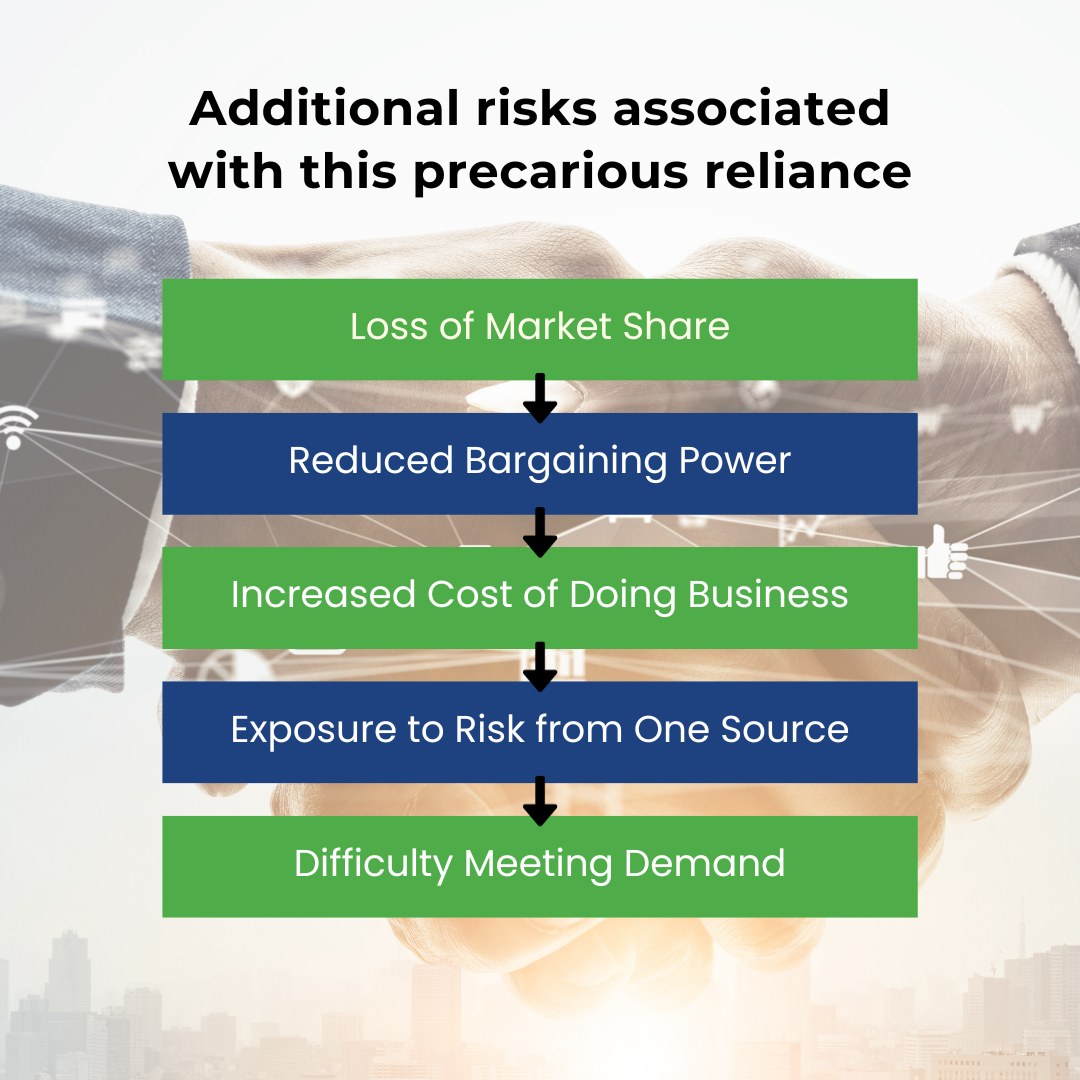In the ever-evolving landscape of business, there’s a timeless piece of wisdom that remains as relevant as ever: don’t put all your eggs in one basket.
This adage particularly holds true when it comes to the relationships between companies and their customers or vendors. Overreliance on a single customer or vendor, a situation often referred to as “concentration,” can create significant risks and vulnerabilities for businesses. In this article, we’ll delve into the dangers associated with such overreliance and the potential consequences that can befall unsuspecting business owners.
The Hidden Dangers of Customer and Vendor Concentration
Picture this scenario: A business owner, engrossed in the day-to-day operations of their company, is blissfully unaware of a looming threat. One major customer’s purchases are a significant percentage of their revenue stream. Unbeknownst to them, this customer brings in a new executive, who has her own relationships with suppliers.
As she onboards with the business, she decides that she wants to continue working with the providers she already knows. Six months into her new role, she makes the call, informing the business owner that she’s decided to terminate their agreement. Now the owner faces a painful and costly hole in their revenue that could take many months to fill. In the meantime, they may find themselves unable to make payroll and forced to let people go.
This cautionary tale serves as a stark reminder of the perils of customer and vendor concentration. Let’s explore some additional risks associated with this precarious reliance:
1. Loss of Market Share
Imagine a company that has staked its future on a single customer. In such a scenario, any shifts in that customer’s needs, demands, or even their business fortunes can spell disaster for the dependent company. If that sole customer decides to take their business elsewhere, the result can be catastrophic – loss of market share, valuable customers, revenue, and profits. This domino effect can extend to the workforce and other critical resources within the company, jeopardizing its very existence.
2. Reduced Bargaining Power
Having only one major customer or supplier leaves a company in a vulnerable position when it comes to negotiating prices, terms, and conditions related to their purchases or sales. The disproportionate influence of the solitary customer or vendor gives them the upper hand in such discussions, leaving the dependent party at a significant disadvantage. The lack of alternatives means they have little choice but to accept the terms dictated by the stronger party, potentially eroding profitability and sustainability.

3. Increased Cost of Doing Business
Relying heavily on a single customer or vendor inevitably leads to increased operating costs. Businesses must allocate more resources to ensure that this critical relationship is adequately serviced and maintained. This means dedicating additional time, personnel, and financial resources to cater to the specific needs and demands of the dominant party. As a result, the company’s profit margins are often squeezed, making it more challenging to sustain profitability.
4. Exposure to Risk from One Source
Placing all of your eggs in one basket can be a risky proposition. If anything were to happen to that primary customer or vendor – such as bankruptcy, market fluctuations, or a change in leadership – the company becomes dangerously exposed. With no other significant revenue sources to fall back on, a sudden loss of business from that single source can be a death knell for the company. Diversification, in contrast, helps mitigate this risk by spreading income across multiple clients or suppliers.
5. Difficulty Meeting Demand
In the business world, success often depends on an organization’s ability to meet its customers’ demands promptly and efficiently. Overreliance on one customer, however, can hinder a company’s flexibility and responsiveness. If the customer’s demand suddenly surges, and the company lacks alternative sources to meet this increased need, it may struggle to keep up. Inadequate customer service and delivery delays can lead the client to seek alternatives, jeopardizing the business relationship.
Conclusion: Diversify
Business owners and decision-makers must recognize these risks and take proactive steps to mitigate them. Diversifying customer and vendor bases, rigorously managing finances, and maintaining a keen awareness of the potential pitfalls are essential to safeguarding the stability and longevity of a company
Heed our warning to avoid customer or vendor concentrations! This is critical to ensure your continued success and resilience in the face of an ever-changing marketplace.
Related Articles
Scalability: What It Is and How to Improve It
Scalability is the ability to grow – to flex and adapt production and operations to accommodate a rising demand for products or services. Growth can create unexpected challenges, however. and if a business cannot scale, it could fail because it’s too successful too quickly.
Business Performance and Staff Retention
In the fast-paced dance of business, the last thing you want to hear from an employee is, “I’ve found another position and will be moving on.” It’s not just a farewell; it’s a hit to your business performance and staff retention.
How To Set Good Goals That Build Your Business
Knowing that planning and setting goals is a good thing to do is different from actually doing it. We’ve created a list of questions to consider that will guide you through planning and goal-setting for your business..

